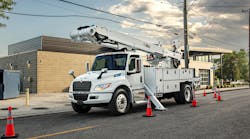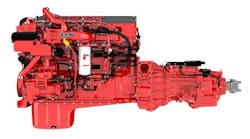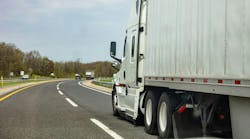Last year, various news outlets crunched the most recent U.S. Census data and reported that "truck driver" was the Number One occupation in a majority of states today.
NPR's take, for example, put the number at 32 states where driving a truck is the most common job reported.
There are a lot of reasons for this – a global, Internet-fueled, economy utterly dependent on fast, efficient logistics is one. But, there's no way around the fact that many, many Americans today make their livings behind the steering wheel.
And if you're a driver, that makes the seemingly sudden appearance of autonomous driving technology very worrisome, indeed.
Automation has been creeping into our lives for decades now. But if there was one job it seemed would remain safe from being taken over by robots, it was driving a truck.
All the hand-wringing aside, I think that's still the case. Although I do believe that increased levels of powertrain automation will make live a lot easier for drivers in the very near future. Automated vehicles today have a serious "WOW" factor, but as the recent crash of a Tesla sedan in full autonomous driving mode shows, the technology is not yet ready for prime time. In this particular case, the guy behind the wheel in the Tesla was an engineer who reportedly had an unshakable belief in the power of technology. So much so, he was reportedly watching a "Harry Potter" movie instead of the road when the fatal crash occurred.
More than anything else, this unfortunate crash underscored the importance of having a trained, alert and aware driver behind the wheel of any vehicle on the road today.
In 25 years, there may very well be enough connected, autonomous vehicles on any given stretch of road that you will be able to watch the 15th Harry Potter movie while "driving," but we ain't there yet. On the other hand, it's naive to think that autonomous features will not become more commonplace in the coming years. But I don't think that's necessarily a bad thing.
The National Highway Transportation Administration classifies four levels of vehicle automation, with something as common as cruise control or an automatic transmission falling under the Level I category in the grouping. And these are technologies that clearly make drivers' lives easier and less stressful.
Level II is when individual systems, such as an AMT and cruise control are integrated to work together, with the driver fully engaged in driving the vehicle. And that's pretty much where the trucking industry in North America is today.
Recently, we've seen several high-profile introductions of Level III automation in trucks; vehicles of driving themselves for limited amounts of time - with a driving monitoring the vehicle, roadway and traffic while it does so. I'd say the odds are strong that these types of "self-driving" vehicles, including Class 8 tractor-trailers, will start entering the market in the next 10 years or so. But, importantly, they will still require fully-trained and attentive drivers behind the wheel.
Well, you ask, who wants to sit behind the wheel of a truck and just monitor things for hours on end?
No one. And I don't think many people will opt to do so, at first.
For starters, current autonomous driving systems don't work everywhere, all the time. Inclement weather, poor data reception or a single malfunctioning system can knock the systems offline, requiring the driver to take control back from the vehicle. Moreover, most truck drivers enjoy the act and art of driving. I certainly do. But, there are times when driving becomes more of a chore than a pleasure: heavy, stop-and-go, traffic, or long-stretches of straight-as-as-ruler highways running across the Midwest, for example.
Which is why I think initially, Level III automation will find a happy niche in trucking as a powerful tool to help drivers take a much-needed break when driving becomes monotonous, while still keeping freight on schedule. Think of it as cruise control on steroids. If traffic is snail-crawling along at (maybe) 15 miles per hour, why spend 45 minutes staring at the taillights of that Camry in front of you and frying your brain when the truck can do it for you?
Hell, I'd argue that as a driver, if you're bored to tears on a straight, flat, featureless stretch of Nebraska interstate and you start feeling inattentive or fatigued, you have a professional obligation to engage autonomous driving mode, if it's available, and take a much-needed break for your own safety and the safety of others around you.
This, I think, will be the reality of autonomous powertrains and vehicles in the coming decade. The eventual realization that autonomous technology, when applied correctly, will be more of a benefit to drivers than a threat to their livelihoods.
That said, it is also highly likely that the move to Level IV automation – vehicles that are entirely capable of driving themselves without any human interaction whatsoever – may happen a lot faster than people expect. But, even the most aggressive Level IV forecasts don't anticipate significant market penetration for another 25 to 30 years.
So your job is safe and will be for some time.
A lot of Old School drivers sneer at much of the new technology appearing today – AMTs being number one on their "Most Despised" list. But as professionals, I'd argue that any tool, system or technology that makes you safer and more efficient is worthy of learning and using when appropriate.
One thing is for certain, the Autonomous Genie is out of the bottle. And he's not going back inside. You can either embrace this new technology and make it work for you, or you can eventually get left behind.


